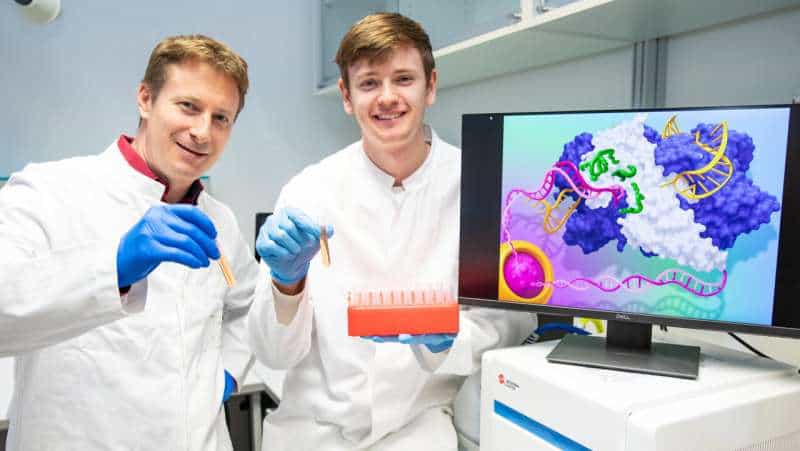The goal of gene therapy is to permanently cure hereditary diseases. One of the most promising technologies for this is the CRISPR/Cas system, colloquially known as gene scissors. These can cut and modify DNA in a targeted manner to repair or remove defective genes or insert new ones.
There are different variants of gene scissors, each of which targets specific locations in the genome. However, not all of them are equally efficient. For example, they do not all cut reliably at the exact location in the DNA where they are supposed to.
A research team led by Professor Tobias Cantz and Dr. Reto Eggenschwiler from the Department of Gastroenterology, Hepatology, Infectiology and Endocrinology at Hannover Medical School (MHH) has now found a way to sharpen three variants of gene scissors and increase their effectiveness.
This adds further functional tools to the biotechnological toolbox. The results of the study are published in Nucleic Acids Research.
Origin: Bacterial virus defense
Originally, the CRISPR system was a biological defense mechanism used by bacteria to protect themselves against infection by phages. These are viruses that exclusively attack bacteria. The foreign DNA is destroyed by the gene scissors and the phage can no longer reproduce. Different bacteria have different types and subtypes of these CRISPR systems.
The CRISPR/Cas9 system from the bacterium Streptococcus pyogenes, which can cause scarlet fever in humans, among other things, is predominantly used. The system uses a so-called pilot RNA, which, like a biological navigation device, guides the Cas9 enzyme to a specific location in the DNA where it causes a double-strand break. Targeted genetic modifications can then be made at this location. The cell’s repair mechanisms later rejoin the double strand.
In order for Cas9 to become active, it requires a specific DNA recognition motif, a so-called PAM sequence (protospacer-adjacent motif). This is a short nucleotide section on the DNA. Nucleotides are the basic chemical building blocks of our DNA and consist of a sugar, a phosphate group and a nucleic base. There are four different DNA nucleic bases: adenine, guanine, cytosine and thymine. The nucleotides store and transmit our genetic information.
Cas9 variants cut at other DNA sites
The PAM nucleotide section on the DNA is required by the Cas9 enzyme to cut the directly adjacent site in the genome. This sequence therefore determines the exact areas that can be edited by the gene scissors. The common PAM sequence of the CRISPR/Cas9 system is NGGN.
Here, “N” stands for a variable nucleotide—i.e. one with any of the four bases—which must be followed by two nucleotides with guanine bases. This is followed by another variable nucleotide. However, there are also Cas9 variants that target other PAM sequences or can even largely dispense with PAM recognition.
The gene scissors equipped with these variants can therefore cut the genetic material at different sites than the original version. The disadvantage is that they cut less efficiently than the standard CRISPR/Cas9 system. Dr. Eggenschwiler’s research team has now investigated the interaction with the DNA of three of these Cas9 variants in detail and then genetically modified them in a targeted manner.
“We first improved a Cas9 enzyme called iSpyMac, which can be used to specifically target NAAN-PAMs,” says Dr. Eggenschwiler.
“This is important because AA is the most common dinucleotide, i.e. the most common double base sequence in the human genome, and thus opens up many new possibilities for gene modification.”

